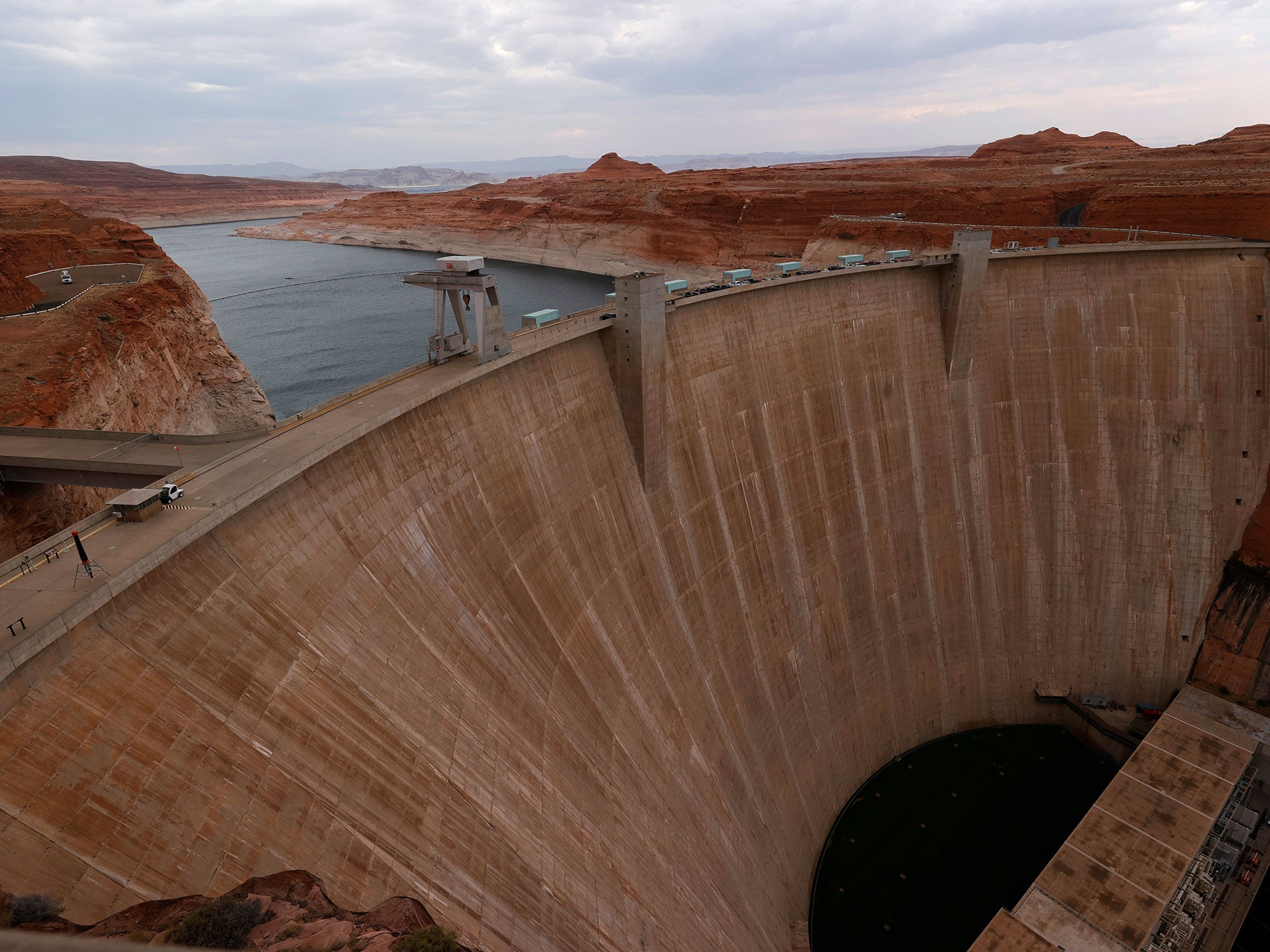
Droughts threaten one of the Southwest power grid’s biggest electricity generators
This write-up was at first highlighted on Higher Nation News.
30-nine years back, due to record-breaking snowfall in the Upper Colorado River Basin, Lake Powell rose considerably, catching river managers off-guard. By late June, the reservoir was practically overflowing, forcing operators—for the to start with time ever—to count on the spillways. In its place of giving reduction, that precipitated a new disaster, as a phenomenon called cavitation sent shockwaves through the spillways’ innards, tearing by the concrete and then the sandstone, putting the colossal Glen Canyon Dam in peril.
The spillways had been fixed, and the dam survived. But now it is threatened but once again, only this time for the opposite motive. In March, Lake Powell’s floor stage dropped to in 33 ft of the minimal essential to create hydropower, for the first time given that it was crammed in the 1960s. If—or when—it hits that vital level, the Southwest electricity grid will reduce one of its most important electric power generators, as nicely as an indispensable backup power resource. And, it might even guide to a type of minimal-water repeat of the 1983 incident.
When the reservoir is comprehensive, Glen Canyon Dam’s 8 huge turbines have 1,300 megawatts of capacity, equivalent to a massive coal power plant. The dam serves as a “baseload” electric power resource, cranking out a steady stream of juice, which the federal Western Area Energy Administration (WAPA) sells at under-market costs to Southwestern utilities, tribal nations and municipalities. It is also useful as a “load-following” source, this means operators can ramp output up quickly to satisfy a spike in demand from customers or a sudden reduction of source, contributing to grid resilience and assisting to sleek fluctuations in wind and photo voltaic technology. Glen Canyon Dam was originally made generally to store h2o all through wet periods and release it all through dry periods. It also delivers flood manage, functions as a silt catchment basin for Lake Mead, and is a watercraft playground, drawing as several as 4.5 million visitors for every 12 months. But its part as a electrical power supply has risen to the prime of its makes use of around the many years.
About the past two a long time, climate transform-induced drought and increasing h2o desire have depleted Lake Powell significantly: It is now less than a single-fourth comprehensive. As drinking water ranges drop, so, way too, does the likely electrical power of the slipping drinking water. That, in convert, lowers the turbines’ generating ability and electrical power output. In the 1990s, the dam manufactured as much as 7,000 gigawatt hrs for each yr, ample to electric power virtually 600,000 properties. Past calendar year, it was down to just 3,000 gigawatt several hours.
This chronic decline in making potential is about to develop into more acute. As the reservoir ways the 3,490-foot bare minimum energy pool, air could get entrained in the turbine-feeding penstocks, wreaking all forms of havoc. At that point, operators have no preference but to end sending water by way of the turbines, killing electric power generation and depriving the grid of sufficient electric power each year to power about a quarter of a million Arizona households. It would also drain involving $100 million and $200 million yearly from dam energy gross sales, a chunk of which goes to fund endangered species recovery, salinity management and drinking water studies on the Colorado River.
That would force WAPA to buy much more high-priced energy, including energy produced from purely natural fuel or even coal, to source its millions of buyers. The common utility consumer may possibly not even discover the dollar or two this adds to their regular monthly monthly bill, but it could amount to a sizeable price tag hike for the tribal nations that count on WAPA for most or all of their energy. The Navajo Tribal Utility Authority’s annually electrical power invoice could bounce by as a lot as $1.3 million, according to a 2016 consultant’s review, and 9 other tribes would also see significant charge increases.
Similarly worrisome is how grid operators will fill the era void left when the dam goes offline. New wind and solar ability, paired with batteries or other electrical power storage, can change some or all of the baseload ability. But any excess era capability is going to be in significant desire as major coal and nuclear crops retire in the next couple many years. Meanwhile, photo voltaic and wind simply cannot abide by hundreds like a hydroelectric dam, so utilities are probably to flip to greenhouse gas-emitting purely natural gas crops in its place.
Around the past couple of months, federal officers have tried to stave off the energy plant’s obsolescence by raising releases from upstream dams and by sending much less water downstream. But that unsuccessful to buoy reservoir concentrations, so now they have embarked on an exertion to set up turbines river outlet tubes lower on the dam, which would allow for hydroelectricity generation to proceed beneath bare minimum ability pool—for a although.
That method delivers its possess challenges, however, considering that the tubes have only been applied for small stints and were under no circumstances intended for extensive-term use. No one understands what will materialize if they turn out to be the only release valve for the reservoir’s h2o. Working the dam at these very low concentrations raises a large amount of “operational uncertainties,” Tanya Trujillo, the Interior Department’s assistant secretary for water and science, instructed attendees at a seminar past year. She even harkened again to the 1983 spillway tunnel deterioration and the ensuing around-catastrophe. “The engineers use words and phrases like cavitation,” she mentioned ominously, “and that will get my interest.”
